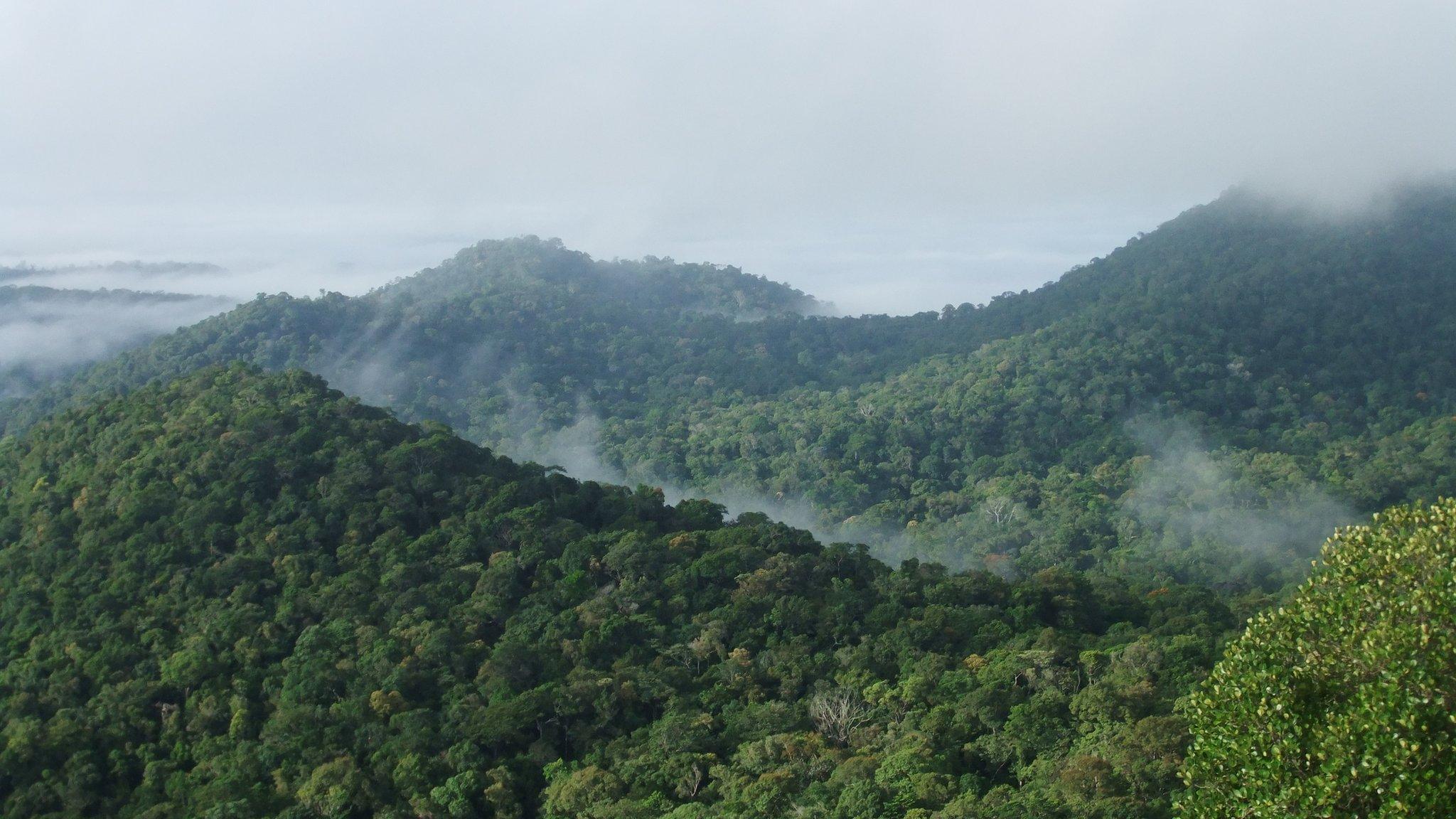Do we underestimate the power of plants and trees?
- Published

There are an estimated three trillion trees on earth
Research suggests plants might be capable of more than we suspect. Some scientists - controversially - describe plants as "intelligent".
They argue a better understanding of their capabilities could help us solve some of the world's thorniest problems.
Four experts talk to the BBC World Service Inquiry programme about what plants can teach us.

Stefano Mancuso: Plant intelligence is real
Professor Stefano Mancuso, external leads the International Laboratory for Plant Neurobiology at the University of Florence.
"We are convinced that plants are cognitive and intelligent, so we use techniques and methods normally used to study cognitive animals.
"The main problem with plants is they move much more slowly than animals so we need to record plant movement for many days.
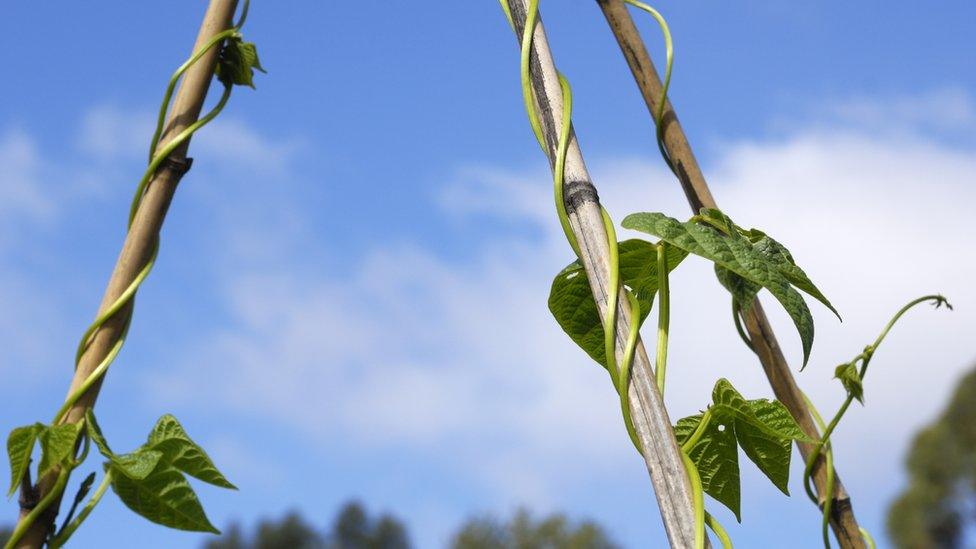
Neighbouring bean plants compete for resources
"We did an experiment with two climbing bean plants. If you put a single support between them, they compete for it.
"What is interesting is the behaviour of the loser: it immediately sensed the other plant had reached the pole and started to find an alternative. This was astonishing and it demonstrates the plants were aware of their physical environment and the behaviour of the other plant. In animals we call this consciousness.
"We don't have a clear idea of how plants are able to sense the behaviour of other plants.
"Plants are much more sensitive than animals. Every root apex can detect 20 different physical and chemical parameters - light, gravity, magnetic field, pathogens and so on.
"Plants distribute all along the body the functions that in animals are concentrated in single organs. Whereas in animals almost the only cells producing electrical signals are in the brain, the plant is a kind of distributed brain in which almost every cell is able to produce them.
"Underestimating plants can be very dangerous, because our life depends on plants and our actions are destroying their environments."

Suzanne Simard: The 'wood wide web' connects trees
Suzanne Simard, external is professor of forest ecology in the department of forest and conservation sciences at the University of British Columbia.
"Every tree is linked to every other tree underground - the "wood wide web". Through these pathways they talk to each other and then behave in certain ways.
"In our old-growth Douglas fir forests, we have trees that are 300 years old and six feet in diameter. Those are the hubs of the network because they're so massive and have roots that grow out in all directions.

Experiments showed that Douglas fir trees could identify trees grown from their seedlings
"Fungi and trees form this association where the tree provides the fungus with photosynthate, which the fungus cannot acquire below ground.
"We grew Douglas fir in a neighbourhood of strangers and its own kin and found that they can recognise their own kin and we also grew Douglas fir and ponderosa pine together.
"We injured the Douglas fir by pulling its needles off, and by attacking it with western spruce bud worm, and it then sent a lot of carbon in its network into the neighbouring ponderosa pine.
"My interpretation was the Douglas fir knew it was dying and wanted to pass its legacy of carbon on to its neighbour, because that would be beneficial for the associated fungi and the community.
"There are so many ways we can use this knowledge. We've treated plants as inanimate objects that are there for our use and pleasure.
"But we haven't treated them with respect that they are sentient beings. If we can shift our thinking, and change our behaviour, that will then be beneficial for the plants and our forests."

Barbara Mazzolai: Plant-inspired robots
Dr Barbara Mazzolai, external is coordinator of the Centre for Micro-BioRobotics at the Italian Institute of Technology and built the Plantoid.
"Many robots are inspired by animals, but people never thought about plants as a model, because usually they are considered quite passive organisms - not able to move or communicate.
"When I started, people looked at me strangely. But then I showed people the movements in plants, that they are able to sense the changing condition of the environment. When I demonstrated that it is possible to transform these features in something that can move artificially, the story changed completely.
"The plantoid robot has a trunk like a real plant, with branches and leaves, and several artificial roots that are able to grow through additional material used in 3D printers.
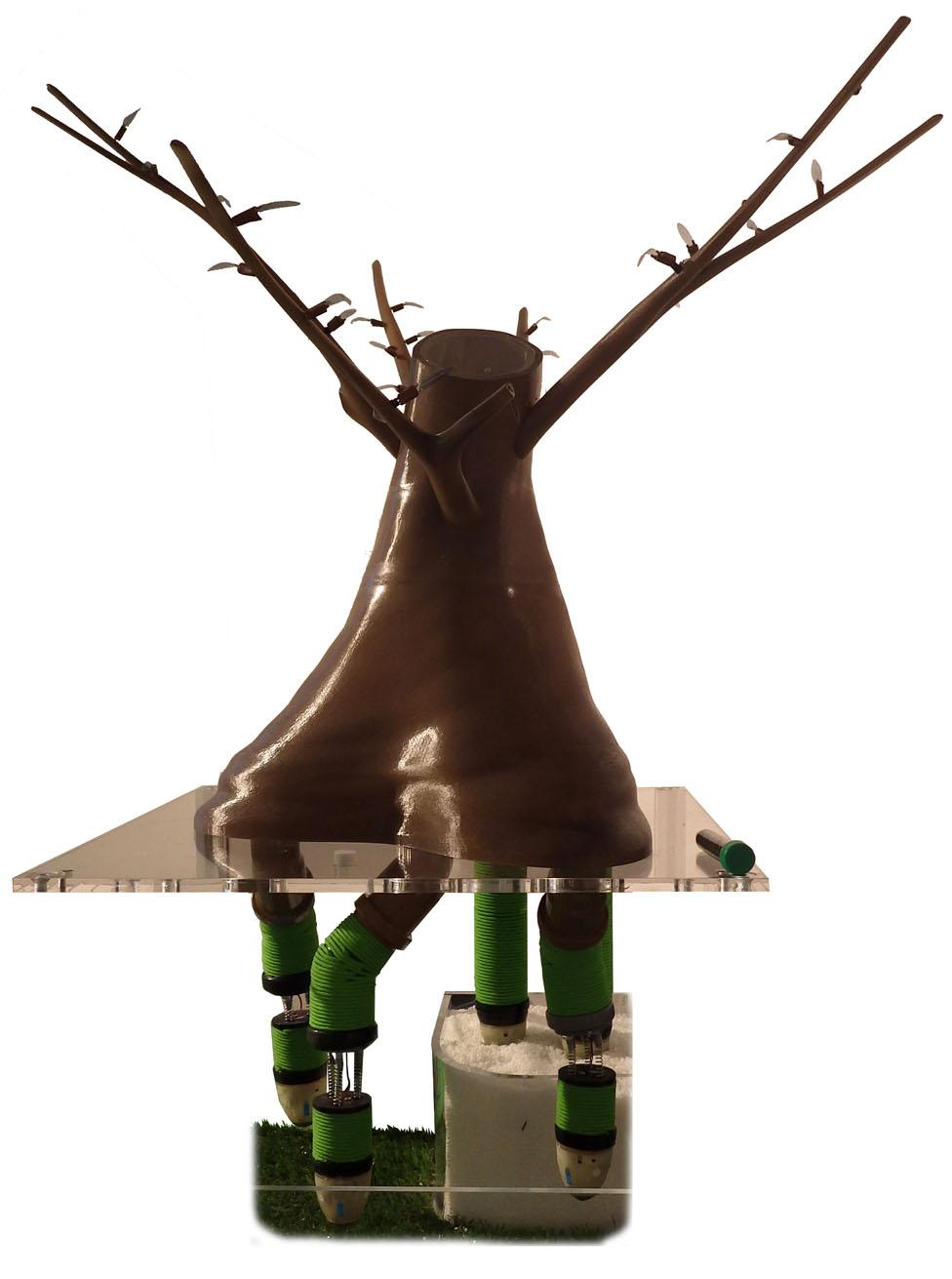
The Plantoid robot which mimics how plants function
"The artificial root can move in narrow spaces. It can autonomously look for oxygen or water or the presence of life.
"So we could use the robot for environmental monitoring, space applications or rescue under debris because it can adapt to the environment like a natural system. The robot doesn't have a predefined structure, but can create on the basis of need.
"Medical robotics could also be a key application. We could develop new endoscopes that are soft and able to grow inside living human tissues without damage.
"Plants are underestimated. They move under the soil and it's difficult to understand the behaviour of these systems. But they have features that can really help us understand nature."

Daniel Chamovitz: Not 'intelligent' but highly useful
Professor Daniel Chamovitz, external is the Dean of Life Sciences at Tel Aviv University and the author of What A Plant Knows.
"Anyone who claims they're studying plant "intelligence" is either trying to be very controversial or is on the borderline of pseudoscience.
"We could see in the Venus flytrap its ability to close on a leaf. I could then define that as "intelligence", but that doesn't help me understand the plant biology at all. We have to be very clear on terminology.
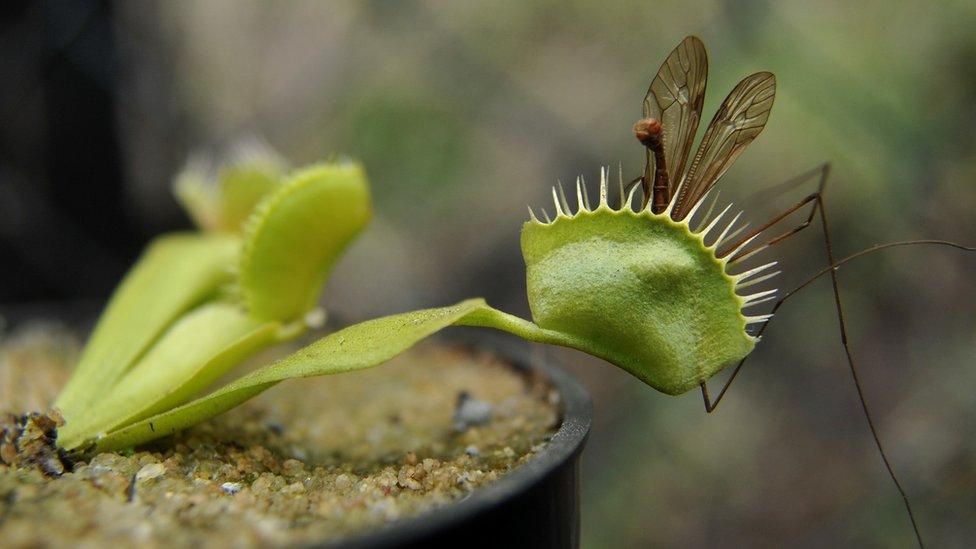
Is a Venus fly trap 'intelligent'?
"We cannot talk about plants thinking. We can talk about plants being aware of their environment because a plant's very exquisitely adapted to its environment.
"There's information being exchanged between roots and leaves and flowers and pollinators and the environment all the time. The plant is making "decisions" - should I change 10 degrees to the left, five degrees to the right? Is it time to flower now? Is enough water available?
"If you grow a plant with a red light on its right and a blue light on its left, it will "decide" to bend to the blue light.
"The question is, did it know that it was making the decision? All this information is being integrated in the absence of a brain and that is the incredibly cool and very unknown mechanism.
"We need to understand that the brain is but one amazing evolutionary solution for information processing. It's necessary to write a symphony and do linear algebra, but it's not the only solution for integrating information.
"We're living in a rapidly-changing environment - global warming, changes in precipitation, shifting populations. If we don't understand how a plant senses and responds to its environment and then adapts, we might find ourselves in a big problem 50 to 100 years from now.
"We've completely underestimated plants. We look at them as inanimate objects, completely unaware of the amazing, complex biology that allows that plant to survive."
The Inquiry is broadcast on the BBC World Service on Tuesdays from 12:05 GMT. Listen online or download the podcast.
- Published3 September 2015

- Published1 September 2015

- Published21 August 2015
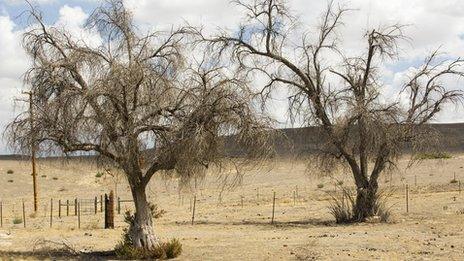
- Published28 April 2015
